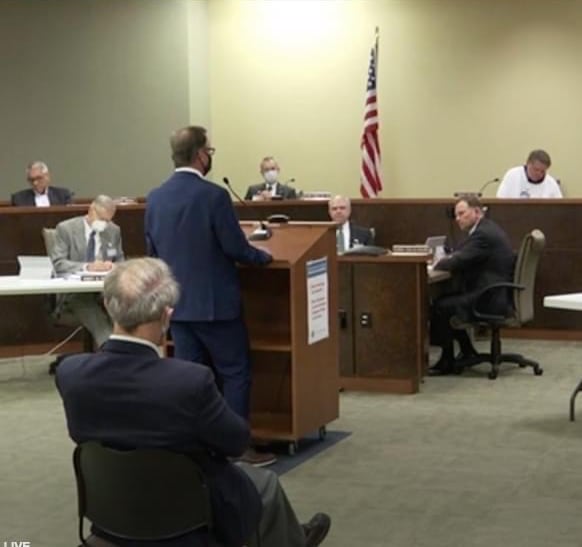Last week there was a surprise announcement that the Pollution Control & Ecology Commission had a minute order on the agenda to pass changes in Reg 5 at the May 27 meeting. Meaning that after 10 months of delay, there was likely to be a resolution one way or another for our efforts to make permanent the current temporary moratorium on medium and large hog CAFO’s in the Buffalo River Watershed. The temporary moratorium was for 5 years and is scheduled to expire this year. Without a permanent moratorium the entire C&H kind of affair could start over again next year. The battle lines have been between those who think that clean water, as exemplified by the Buffalo National River, should be preserved verses the “right to farm” position postured by the Farm Bureau. The possibility of coexistence has been greatly politicalized by the C&H controversy, which, along with the corona virus problem, led to several delayed votes.
But PC&EC meetings are public meetings and DEQ accommodated that by broadcasting on Arkansas Public Television and by allowing no more than 15 members of the public into the hearing room at any one time – the rest were to sit in their cars and await to be summoned by cell phone when their turn to comment came. Health security was tight.

PC & EC meeting May 27th
Given the recent waffling on this issue by the PC&EC, the debate was expected to be contentious and the vote close, but the only public commenters were Richard Mayes (BRWA attorney), Gordon Watkins (BRWA chair), and myself. There was no debate, and reg 5 passed with 12 yes, 0 no, and 3 recusals for various reasons. The several Farm Bureau lobbyists can count votes and apparently knew the battle was lost in PC&EC so they kept their powder dry for another battle.
There are two more potential hurdles for Reg 5 – the joint committee of Health, Welfare, and Labor, which meets June 8, followed by the Arkansas Legislative Council meeting soon after. The Health Committee reviews all PC&EC regulations. The two committee hearings are essentially disjoint groups and we will need to make a maximum push in each to gain passage.
For a historical perspective, hogs arrived in the Buffalo River watershed with the first settlers, domestic hogs and their wild counterparts are endemic to the region. In the 1990’s there were many small hog farms in the watershed ultimately causing water quality issues in the Buffalo River because of leaky and overflowing lagoons. But it soon became clear that the small hog farms could not compete economically with medium to large CAFO’s and their powerful integrators. The small hog farm is now essentially a thing of the past.
Arkansas has two categories for CAFO waste management: liquid (some 150 permits, mostly hog farms with a few dairy farms) and dry (very many poultry farms, with 5 poultry and one hog CAFO still in the Buffalo River watershed). DEQ is the permitting agency for liquid waste and Arkansas Natural Resource Commission (ANRC) is the permitting agency for dry waste. Some farmers see this double permitting as an undue burden on farming and this was the stated motivation for SB550 a year ago which sought to move all waste regulation to ANRC. We unsuccessfully fought SB550 in the Senate AG committee, but then obtained a withdrawal of the bill in the House Ag. Committee when it became clear we had the votes. But SB550 is not dead, merely sleeping and it might be resurrected next year.
